Muscadines
The pop and a burst of juice make muscadines one of the traditional treats of late summer
By Carole HowellAs a boy, my father regularly ignored his sister's call to supper. Even as she stood calling from the edge of the woods, he was sitting high in the tree branches eating wild muscadines, the hulls littering the ground a dead giveaway to his whereabouts.
For the last eight decades, he has continued loving the fruit and tending many varieties, some 50 years old, on his farm in Lincoln County. In September he sells the fruit by the gallon, and in the fall he makes the wine that he shares with his friends at Christmas.
Although they've been cultivated for centuries in the U.S., folks up north don't often have the pleasure of the pop and sweetness of a southern sun-ripened muscadine.
Muscadines are not only good by the handful and the glass full, you also can freeze them, juice them, make jelly and preserves, bake them in pies, turn them into wine, and make healthy smoothies with them. They're currently in research for the medicinal value of the seeds and skin, already available as a dietary supplement. Muscadines are high in antioxidants and have been linked to treating cardiovascular disease.
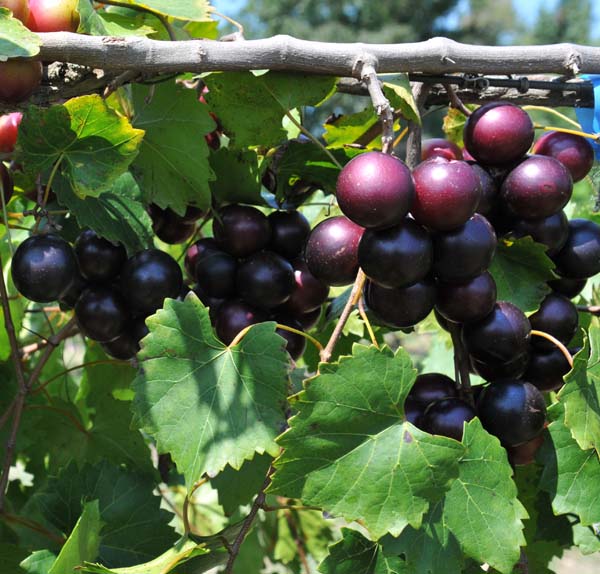

Muscadines are the darker variety, while the bronze-colored grapes are sometimes called scuppernongs. (photos courtesy of Ison’s Nursery & Vineyards)
In North Carolina, the muscadine grape industry has been steadily on the rise since the 1970s. Our soil and climate create prime growing conditions for both commercial production and personal enjoyment, so it's not surprising that muscadines are the official state fruit.
It's clear from the September crowds at our small vineyard that muscadines have quite a fan base. Each year more and more of our pickers are also picking my father's brain for advice on starting their own vines.
Grow your own
Whether you enjoy muscadines fresh, in a wineglass, or spread as jelly on a hot biscuit, you know that they're a late summer treat that shouldn't be missed. If you want to make sure never to miss a season, the solution is to grow them yourself.
Whit Jones, retired N.C. Cooperative Extension horticulture agent and now a consultant for Cottle Farms in Duplin County, knows about muscadines. In fact, they've been his passion for the past 20 years. He's worked with grape growers in Duplin County for most of his career.
He also gets lots of questions from amateur growers who would like to plant their own vines.
New vines are placed in the spring, so fall and winter is the prime time for setting your posts and wires. Choose a location that is well drained. "Start with a soil sample to see what nutrients you're missing," advises Jones. Testing kits and instructions are available at no cost for North Carolina residents. Get yours from your county's Extension office.
For support, Jones recommends untreated black locust or metal posts for organic production. Salt-treated, 3-inch to 5-inch diameter posts also work well. Choose an 8-foot-long post, leaving 5½ feet above ground, 20 feet apart with 10 feet to 12 feet between rows.
Two parallel wires, officially known as a Geneva double curtain, is a favorite of small gardeners and actually increases your yield by about 30 percent, says Jones.
"Use a #9 galvanized wire for support," says Jones. "Anything less will deteriorate over time." The wire is available at some hardware stores and at stores that sell livestock supplies.
With spring, after the last frost, comes the planting. The type of muscadine you choose depends on your preference and how you plan to use them.
"Supreme, Fry, Tara, and Lane are good fresh market varieties, perfect for snacking just as they are, and are popular in North Carolina," says Jones. "For making wine, Carlos, Noble, Doreen, and Magnolia are good choices." He adds that if you choose a female such as Fry or Supreme, you should also add a self-pollinator such as a Nesbitt, Carlos, or Tara to ensure pollination.
Plant one shoot per post about 15 inches away from the post to help support the weight of the main vine and keep the trunk straight.
Training your vines to reach the wire supports is an important part of the care of a new plant. Place a tall stake next to each plant and use a zip tie or string to loosely fasten the young plant. Add ties every two or three weeks as the plants stretch upward. Trim any offshoots from the sides of the plant as it grows, leaving the top two shoots. Once the shoots have reached the wire, continue to tie the vine until it is firmly committed to the wire support.
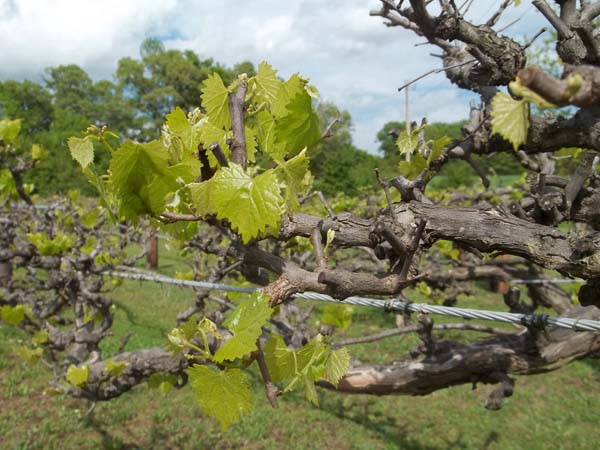
Spring brings new, fruit-bearing growth from shoots carefully pruned over the winter months. (photo by by Carole Howell)
A little care makes a great harvest
Muscadines are not care free, but a backyard vineyard should not be difficult or overly time-consuming to maintain.
After the vines start breaking buds in the spring, apply fertilizer. Jones recommends using 4 ounces, about a handful, sprinkled lightly about a foot away from young plants. He favors a 6-6-18 tobacco fertilizer. Apply lime as necessary to maintain a 6.2 to 6.4-pH level.
September is for harvesting and enjoying the fruits of your labor. The fruit is ripe when it yields to a gentle squeeze. Pick individual grapes and not bunches. One piece of advice: Bees and wasps like grapes too, so be careful when picking. No one enjoys picking an angry wasp.
January and February are trimming months when the plants are dormant. The younger the vine, the less trimming it will need. With a pair of sharp hand-snippers, cut back any shoots that are toothpick size and snip the larger shoots back, leaving 2–4 buds.
If you need more information, the experts at NCSU Cooperative Extension have all the advice you need to get started and maintain healthy vines. Visit their dedicated website at ces.ncsu.edu/muscadines.
Pick and plant
You simply can't grow fruit-bearing muscadines from seed, so choose a nursery for your plants or a fellow grower willing to share a rooted cutting. Cultivars are developed for disease and cold tolerance, sugar content, size, and ripening schedule. With so many varieties, it's easy to find one to satisfy every taste and purpose.
|
Bottoms Nursery & Vineyard Duplin Nursery & Garden Center Ison's Nursery & Vineyards Old Courthouse Nursery |
Tinga Nursery TyTy Nursery Willis Orchard Co. Princeton, NC 919-965-3561 woodardsfarmandnursery.com |
The listing of commercial nurseries in this publication does not imply endorsement by Carolina Country magazine nor discrimination against similar nurseries not mentioned.
About the Author
Carole Howell is an independent writer and amateur muscadine grower in Lincoln County. You can read more about her at walkerbranchwrites.com-
Autumn gardening
-
Share this story:


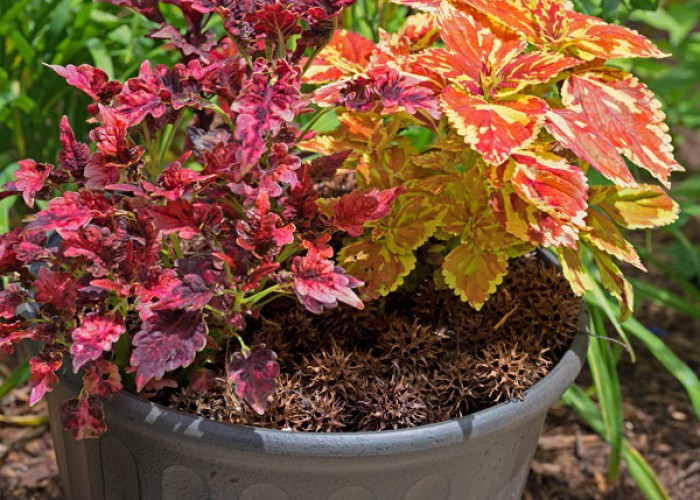
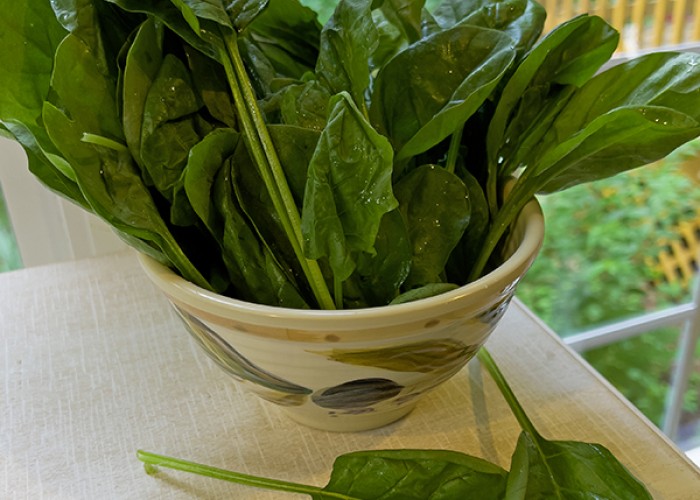
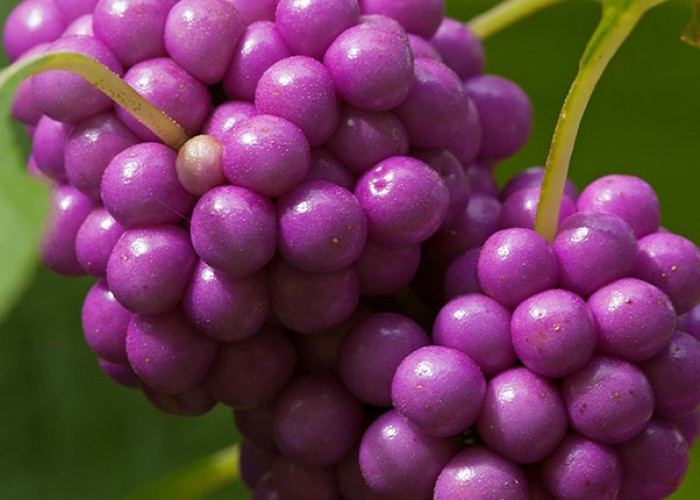


Comments (3)
Catherine |
September 04, 2013 |
reply
Carole Howell |
September 05, 2013 |
reply
AJ |
August 10, 2015 |
reply